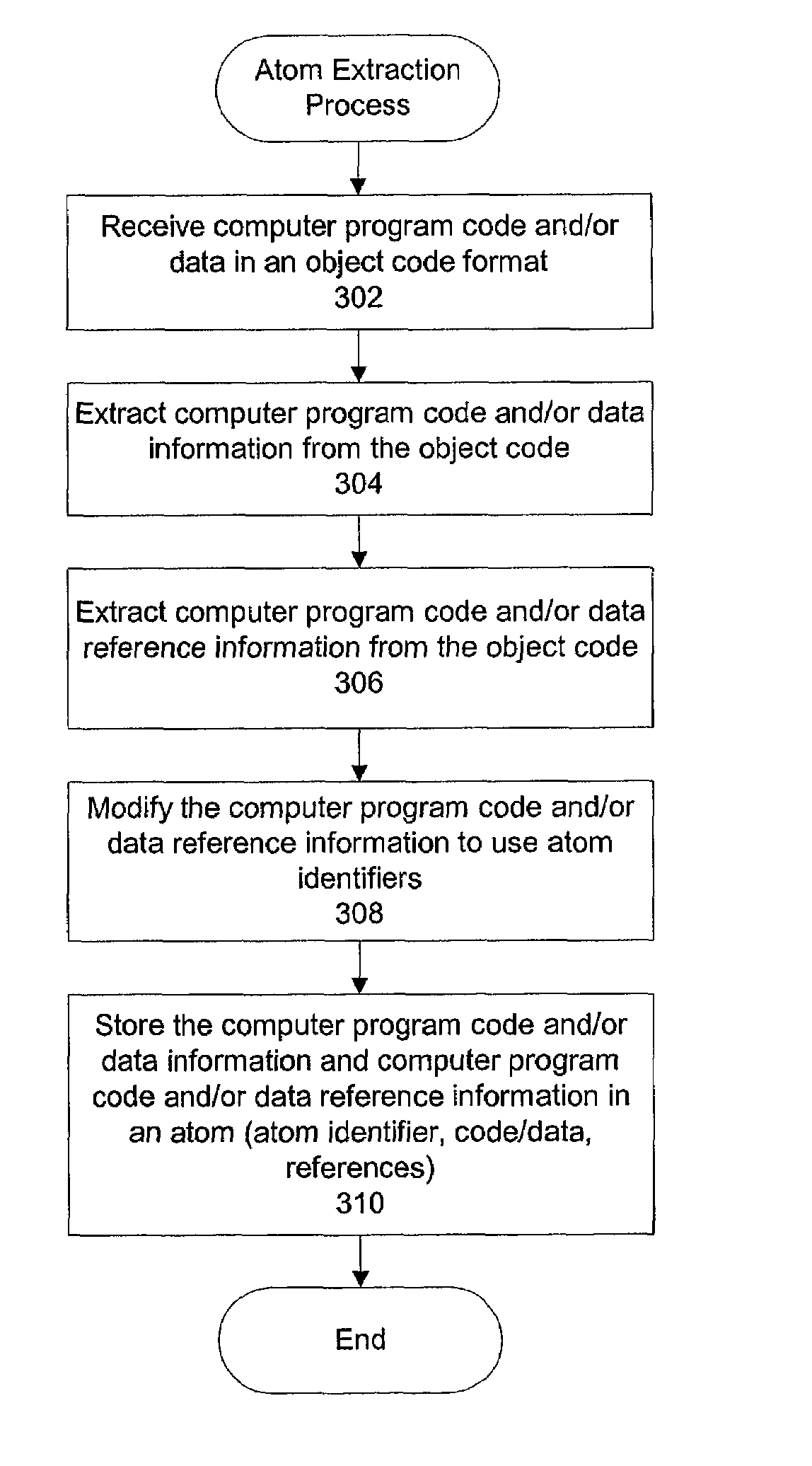Views for software atomization
a software and atomization technology, applied in the field of software atomization views, can solve the problems of loss of the ability to share atoms between various views, large disk space, and large executable programs in large shared libraries (dlls). , to achieve the effect of less disk space, more disk space, and faster at runtim
- Summary
- Abstract
- Description
- Claims
- Application Information
AI Technical Summary
Benefits of technology
Problems solved by technology
Method used
Image
Examples
Embodiment Construction
[0048]A description of preferred embodiments of the invention follows. The preferred embodiments are suitable for atomizing a computer program implementing the Curl™ runtime environment executing appropriate parts of the atomized Curl™ runtime to process software written in the Curl™ language, scripts or non-Curl programs.
[0049]FIG. 1 is a diagram of a computer system on which an embodiment of the present invention is implemented. Client computer 50 and server computer 60 provide processing, storage, and input / output devices for atomizing and executing atomized computer programs. The client computers 50 can also be linked through a communications network 70 to other computing devices, including other client computers 50 and server computers 60. The communications network 70 can be part of the Internet, a worldwide collection of computers, networks and gateways that currently use the TCP / IP suite of protocols to communicate with one another. The Internet provides a backbone of high-s...
PUM
 Login to View More
Login to View More Abstract
Description
Claims
Application Information
 Login to View More
Login to View More - R&D
- Intellectual Property
- Life Sciences
- Materials
- Tech Scout
- Unparalleled Data Quality
- Higher Quality Content
- 60% Fewer Hallucinations
Browse by: Latest US Patents, China's latest patents, Technical Efficacy Thesaurus, Application Domain, Technology Topic, Popular Technical Reports.
© 2025 PatSnap. All rights reserved.Legal|Privacy policy|Modern Slavery Act Transparency Statement|Sitemap|About US| Contact US: help@patsnap.com



